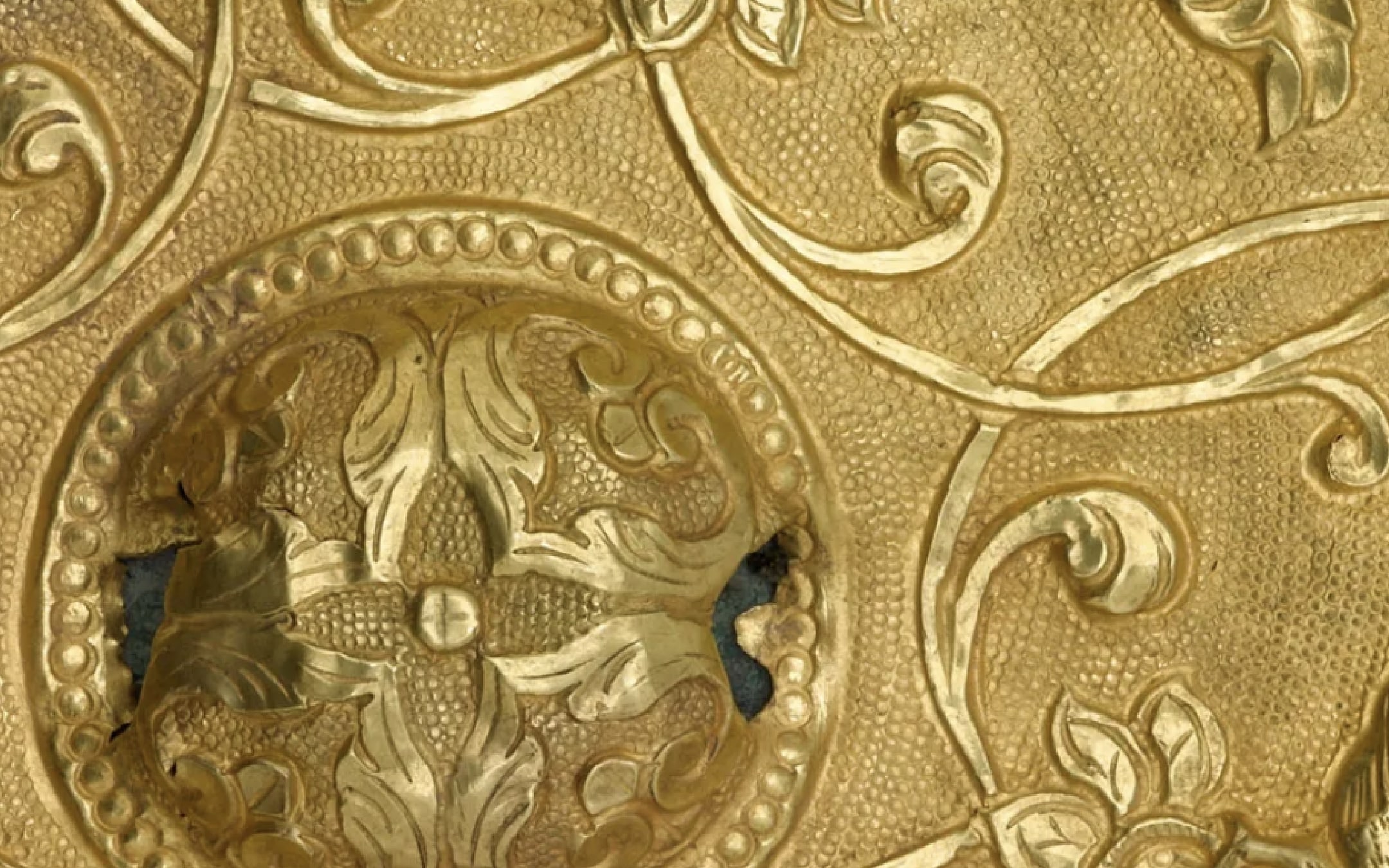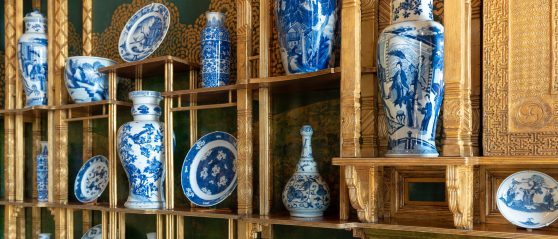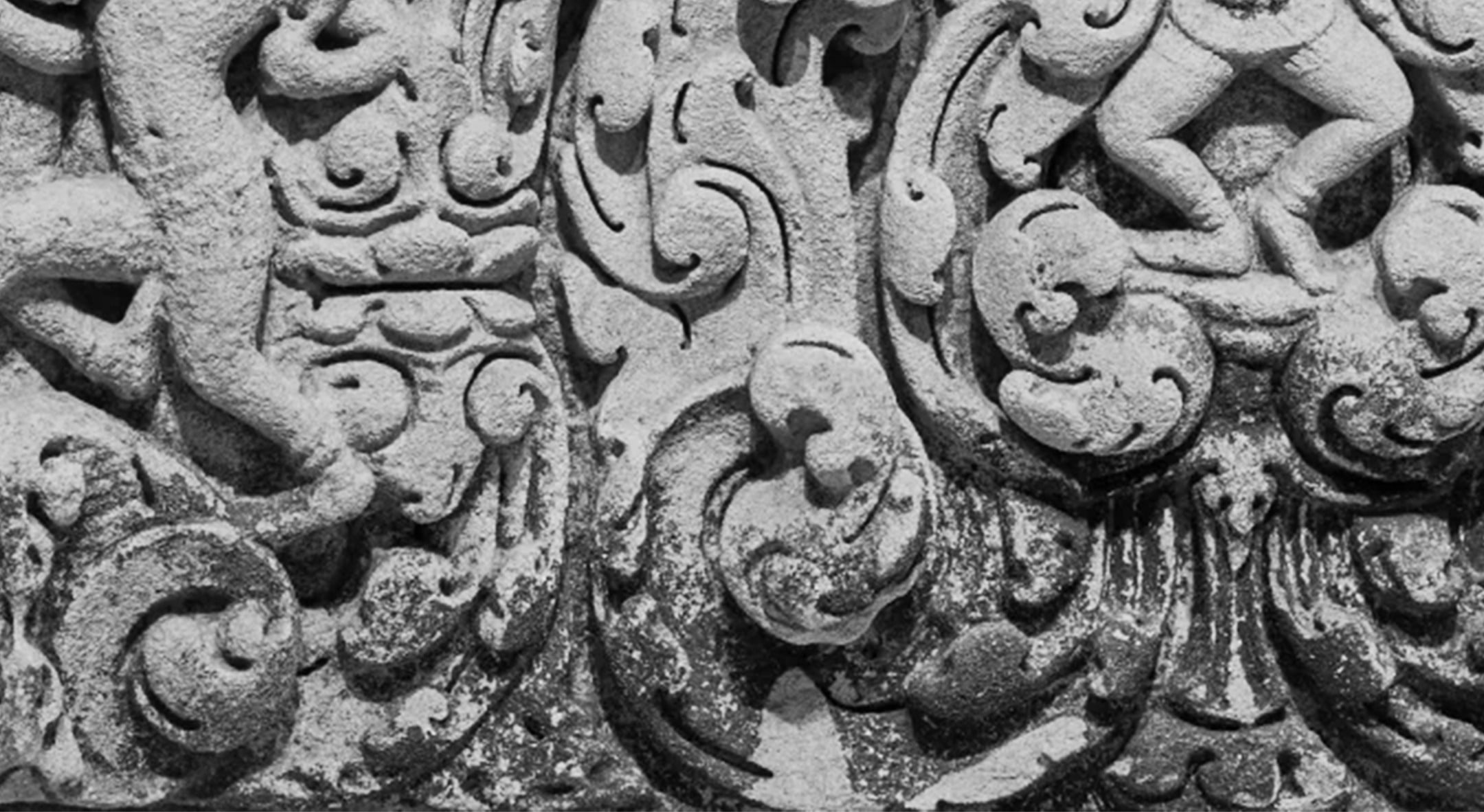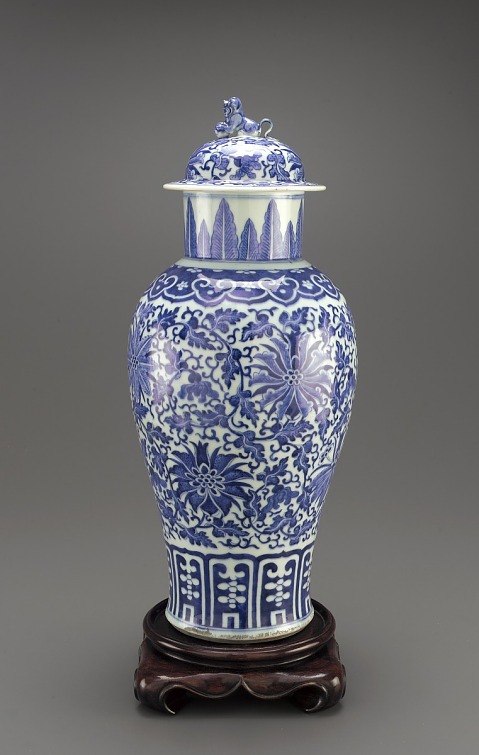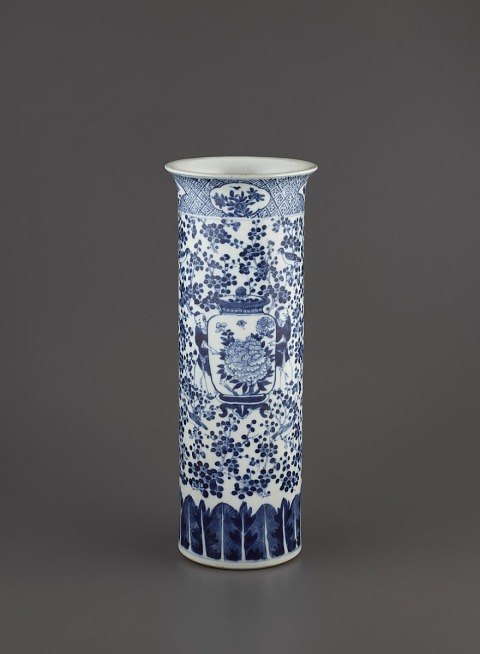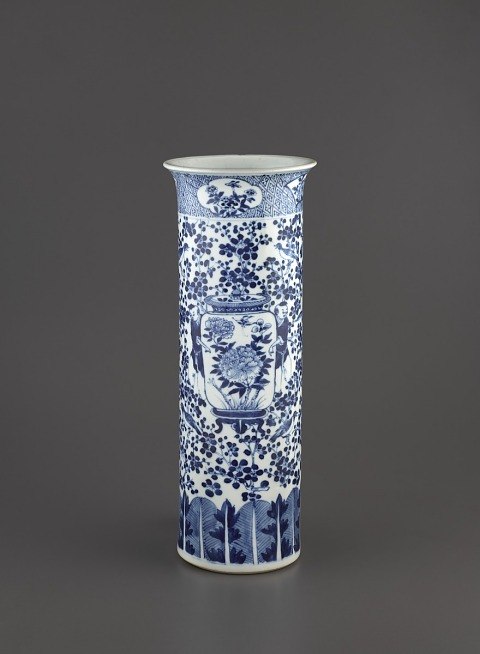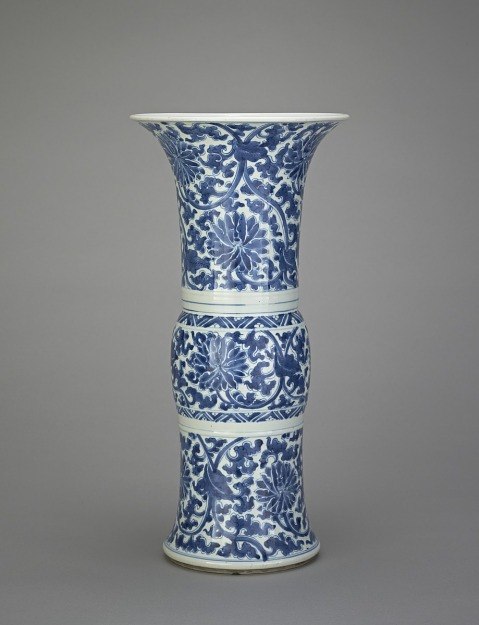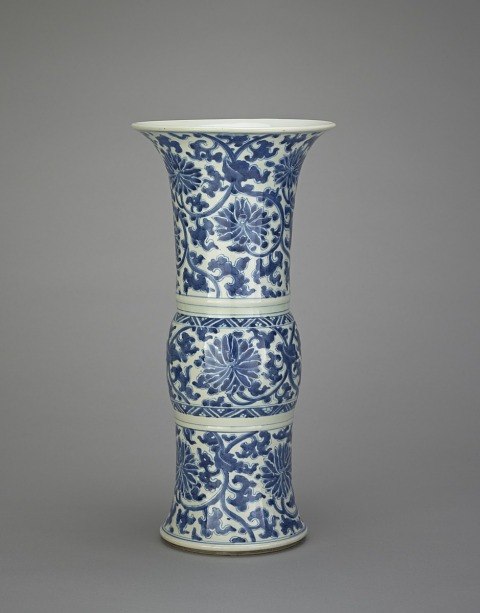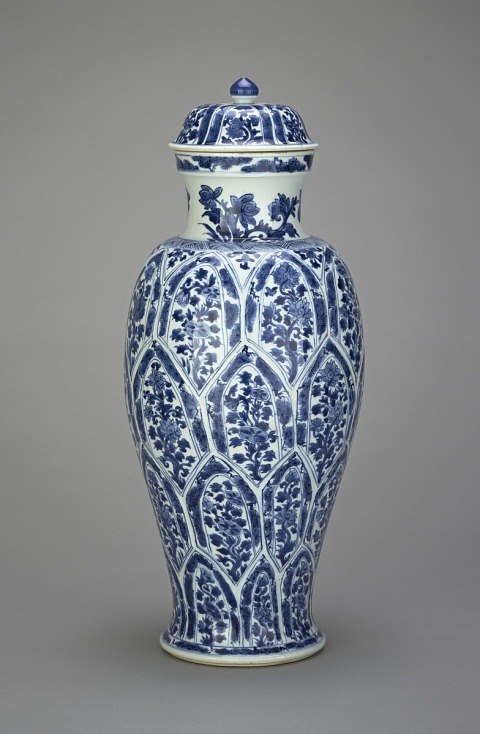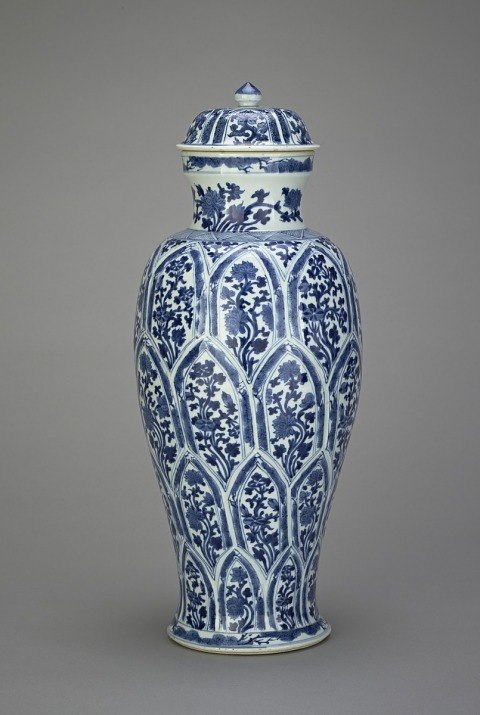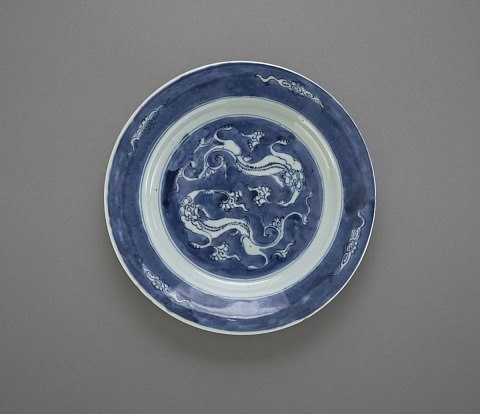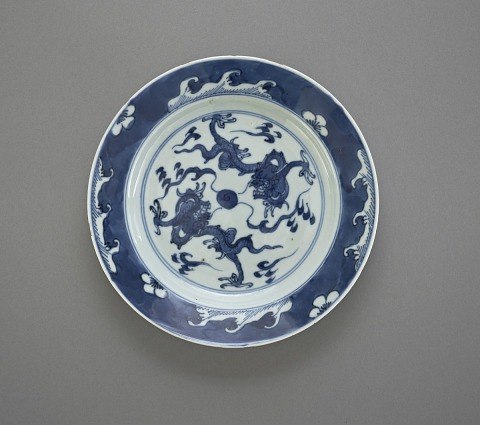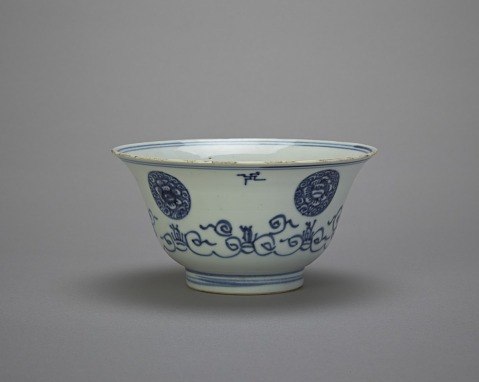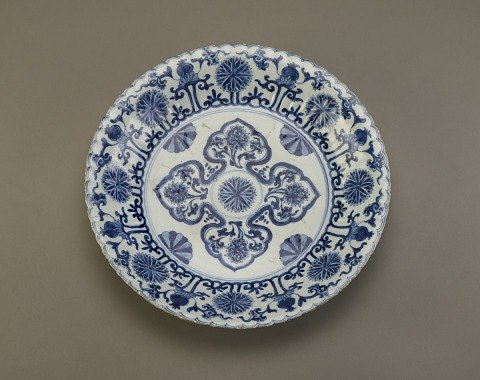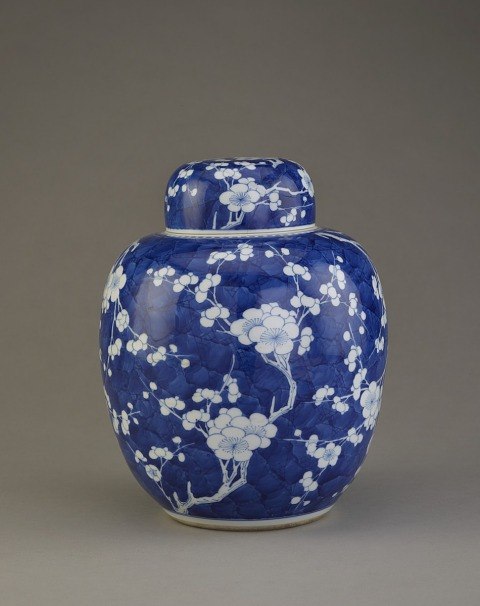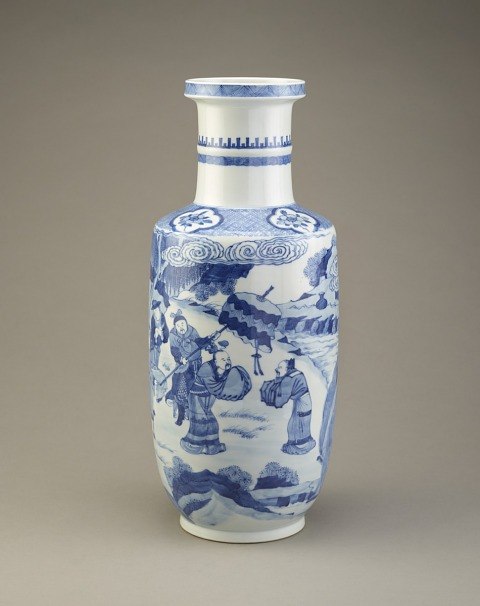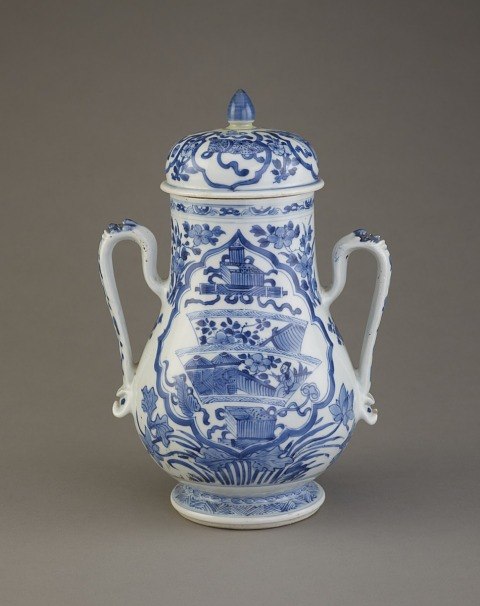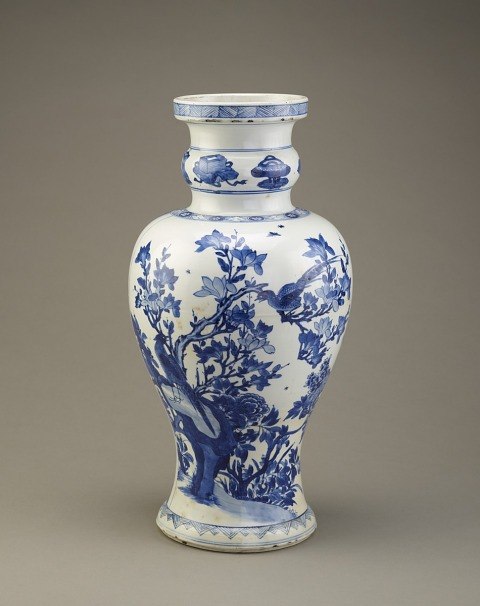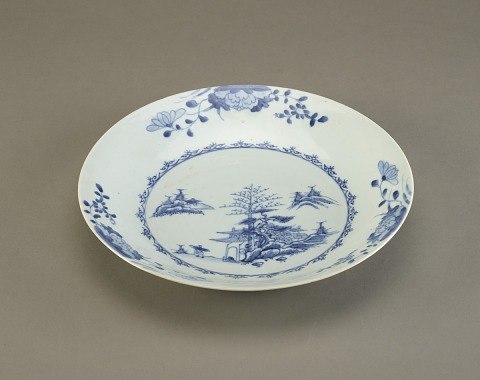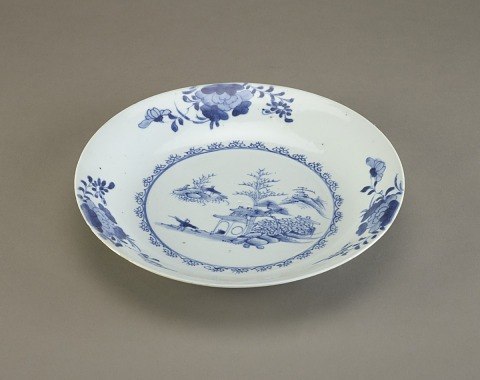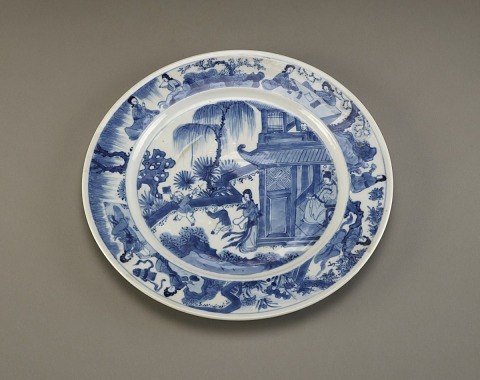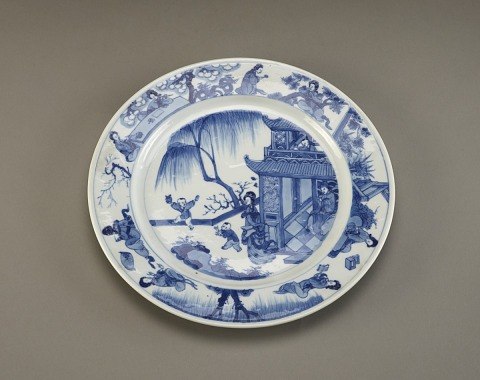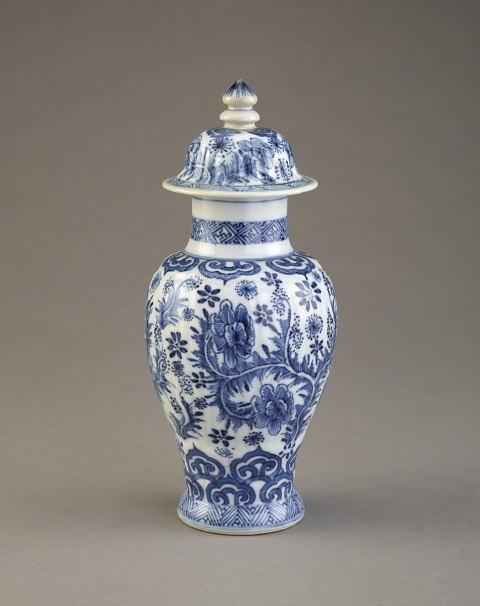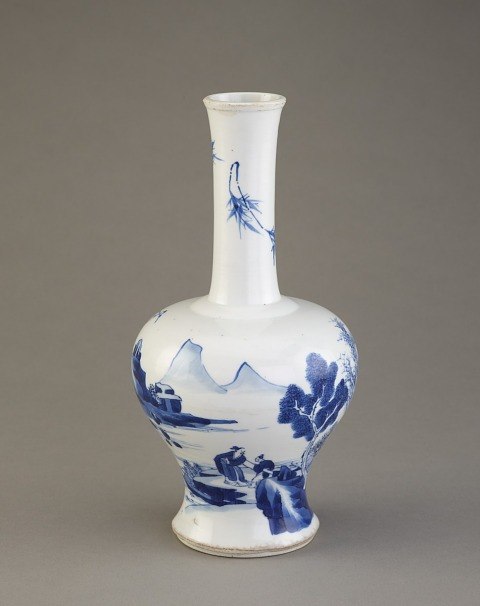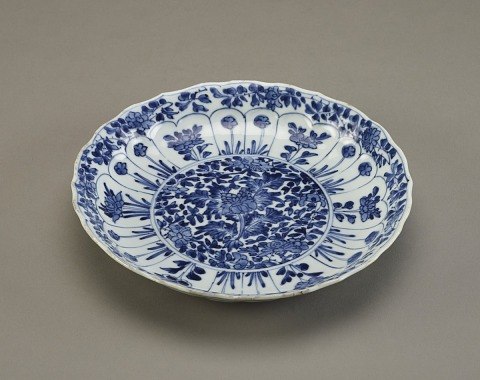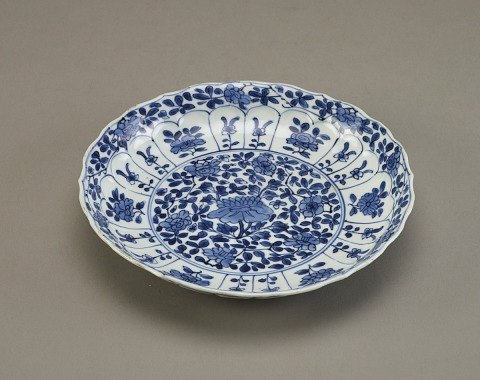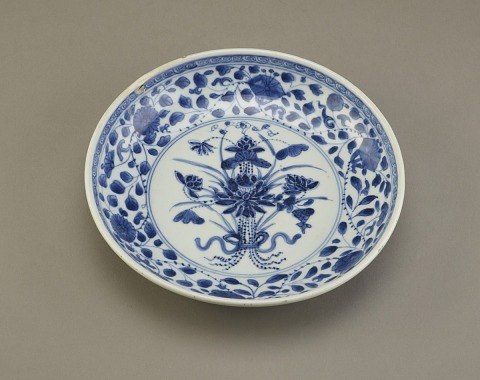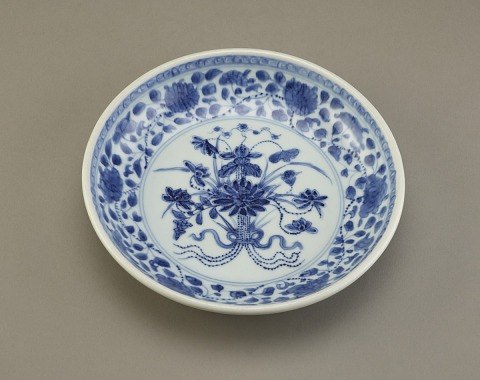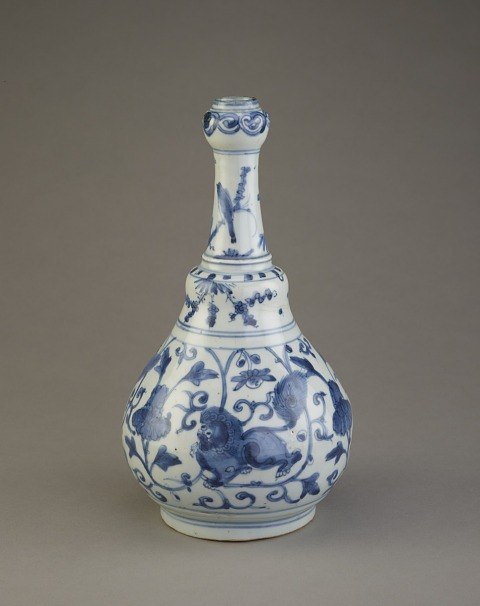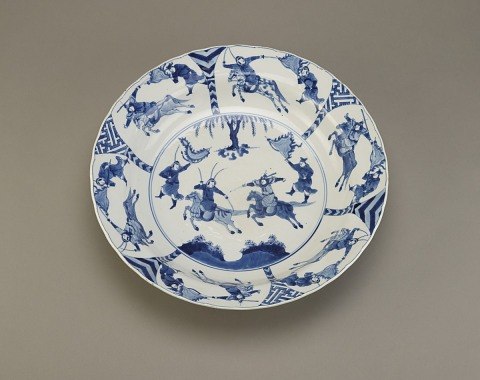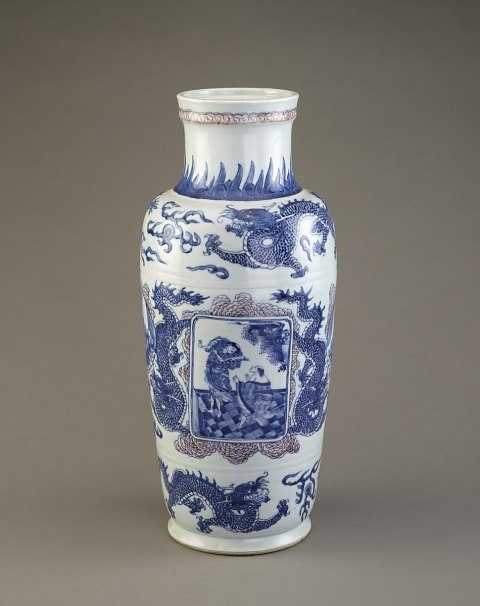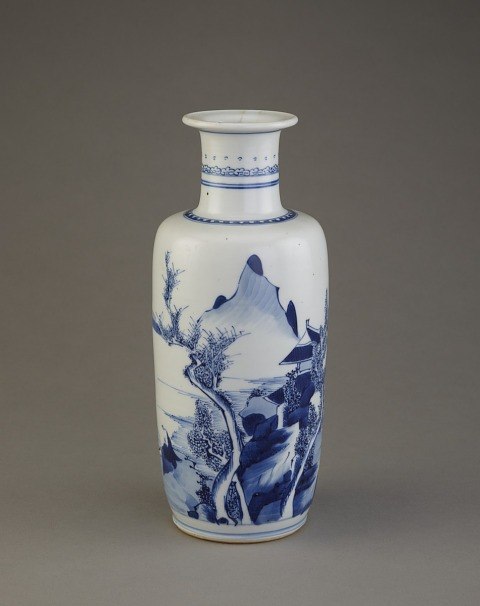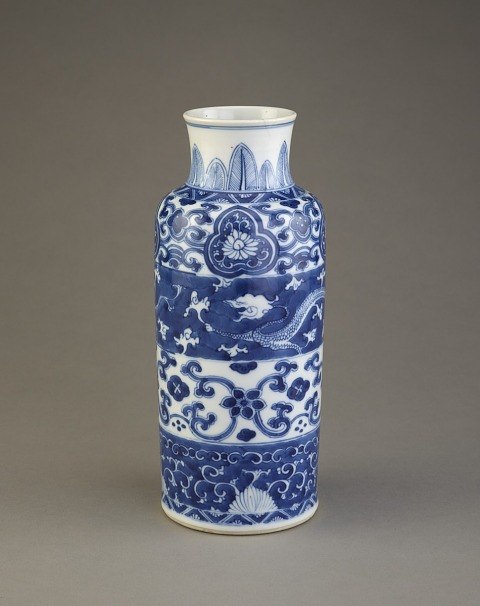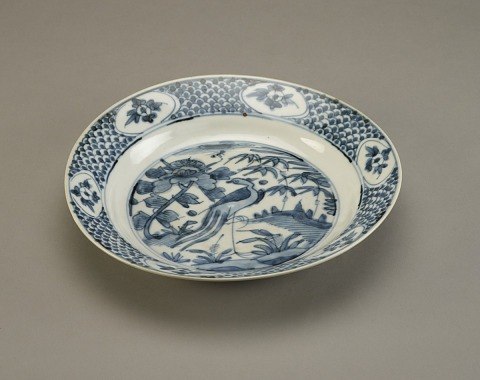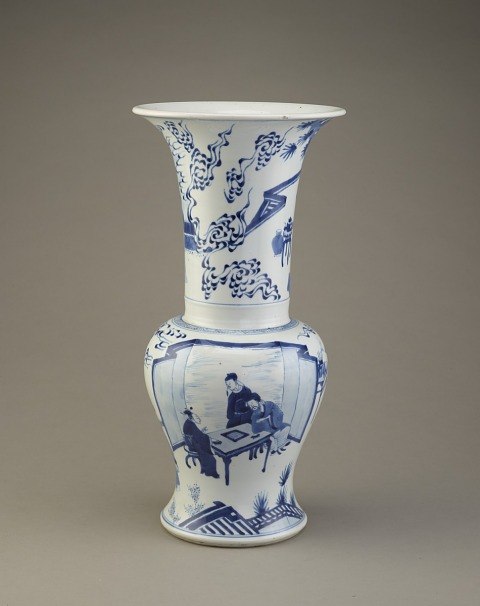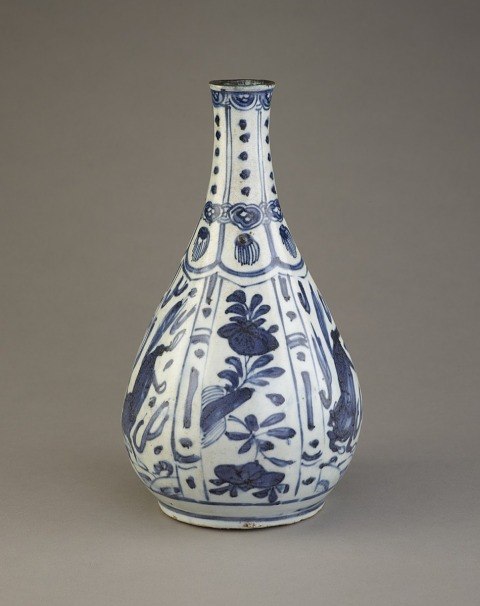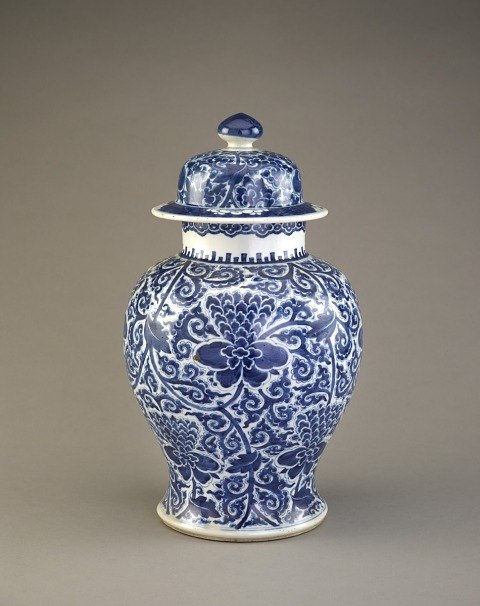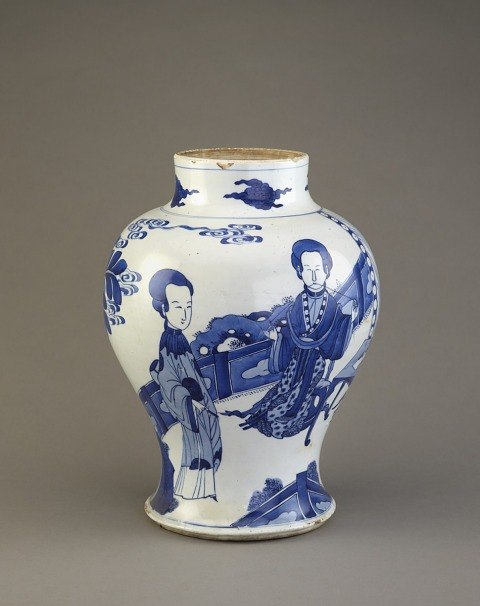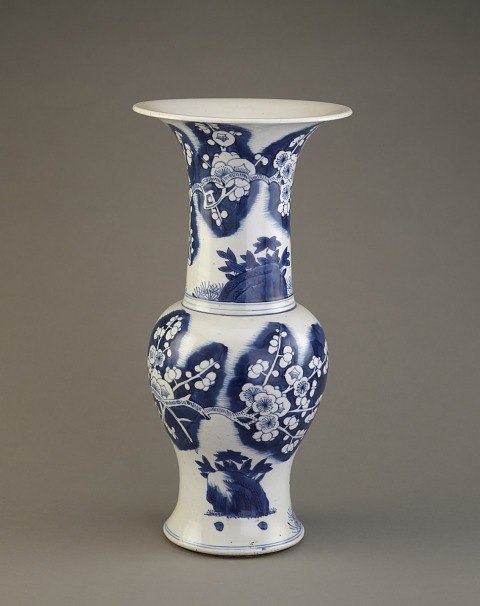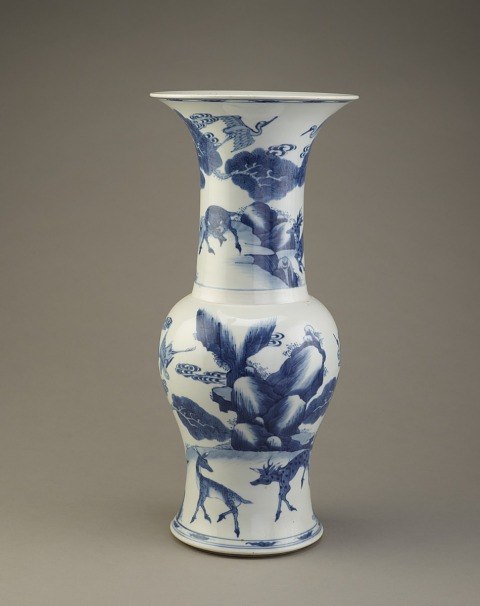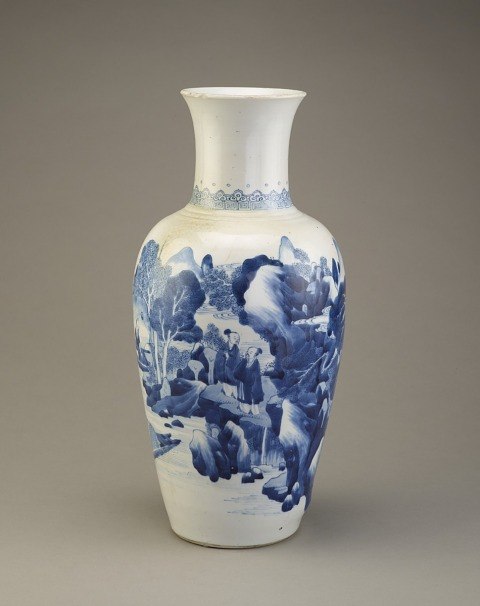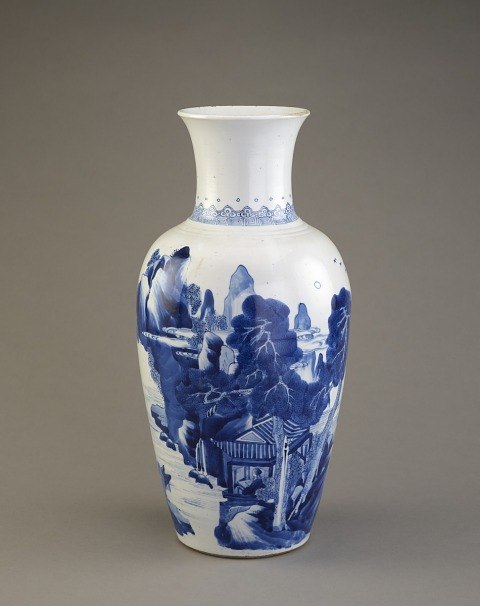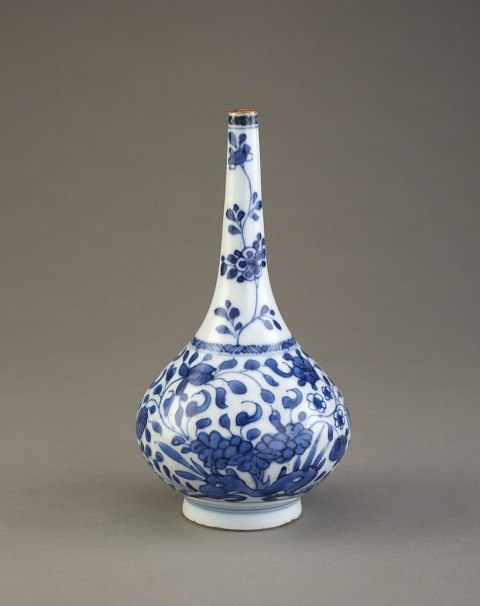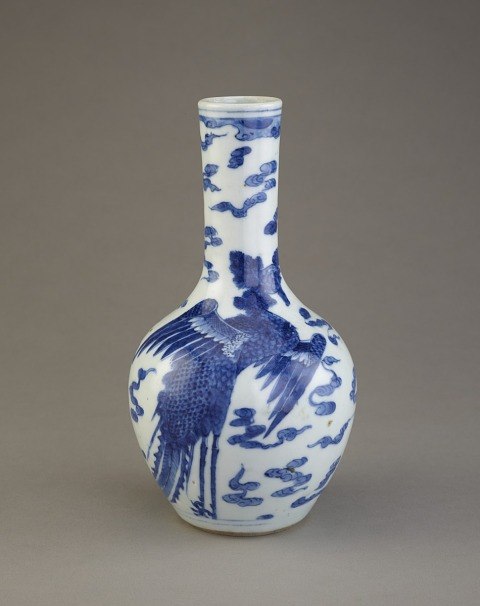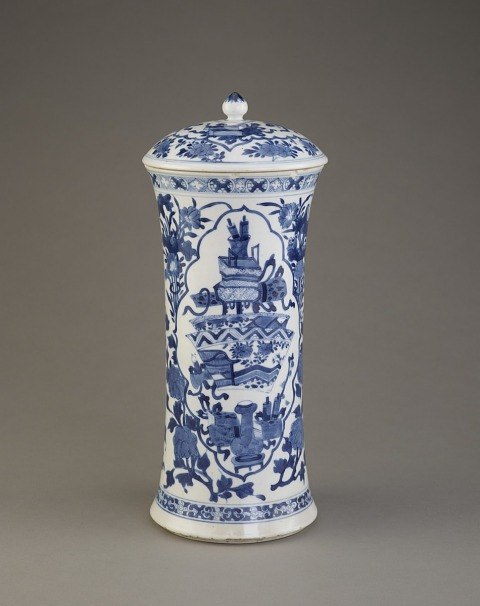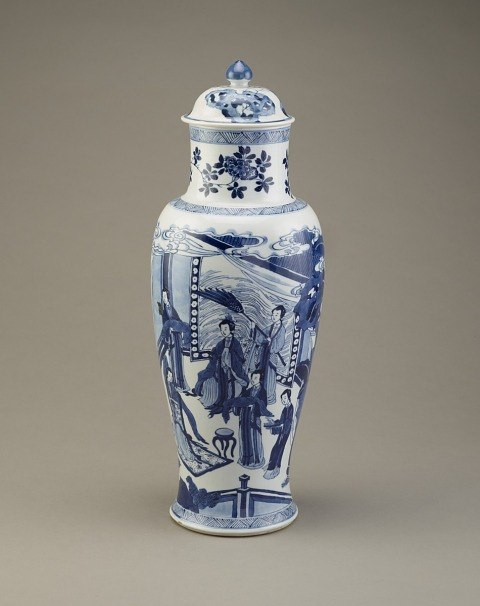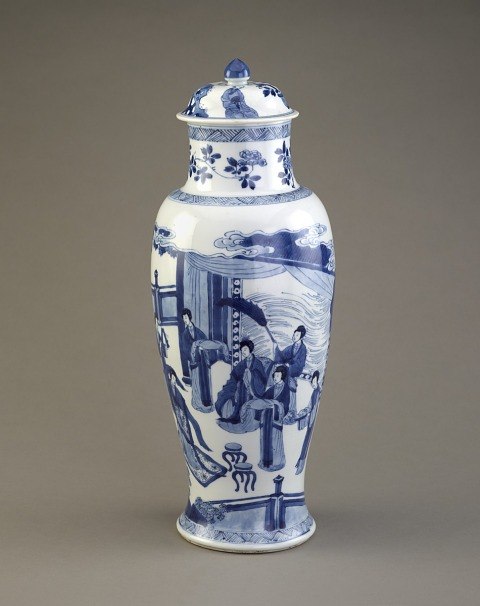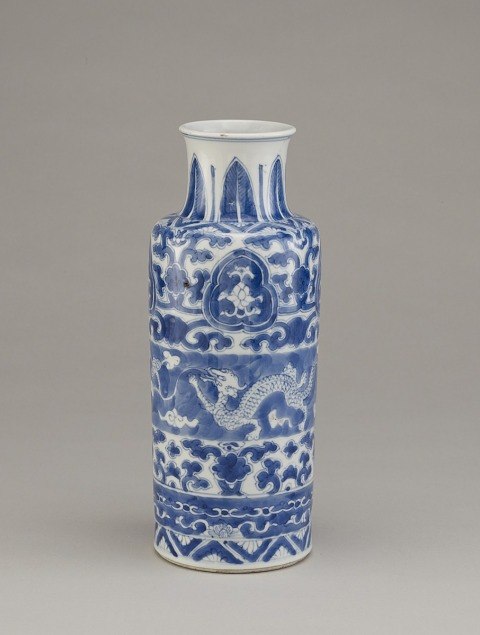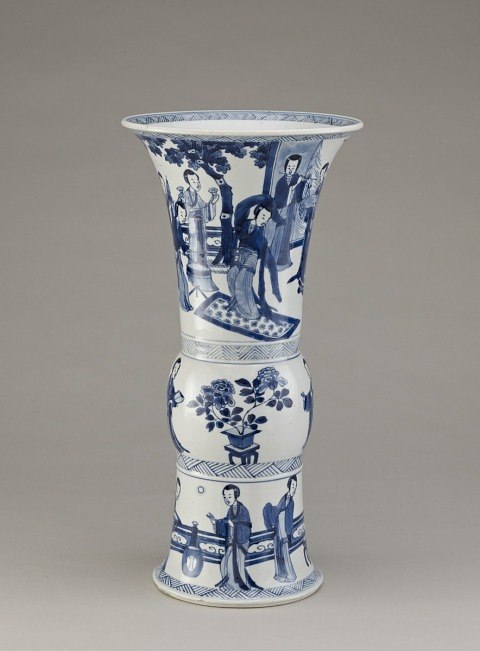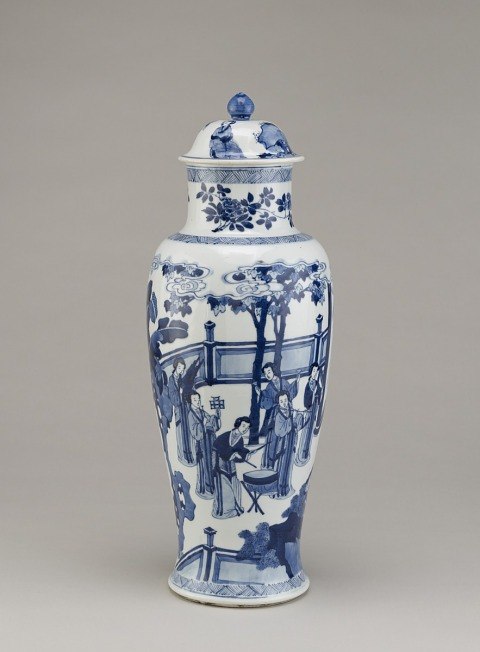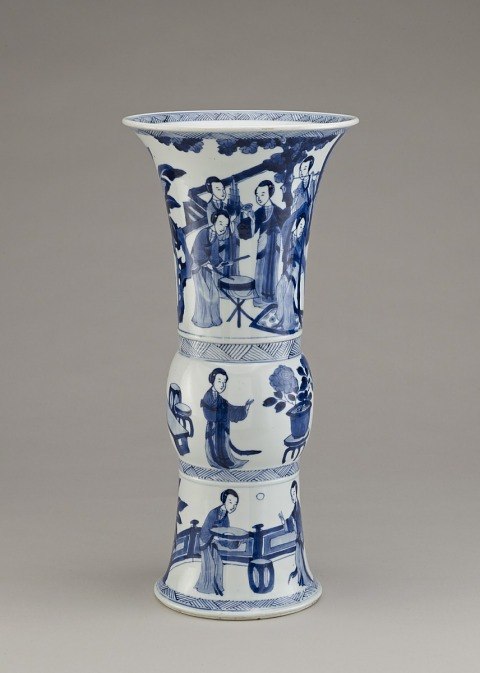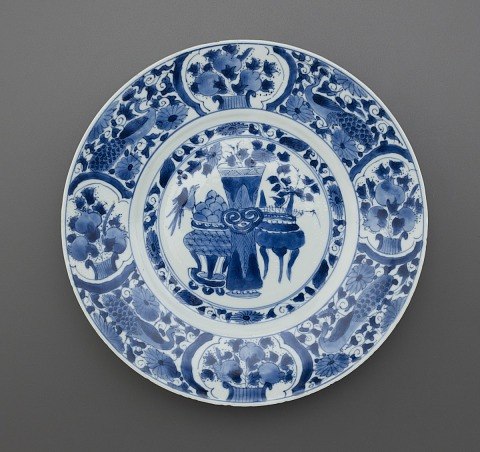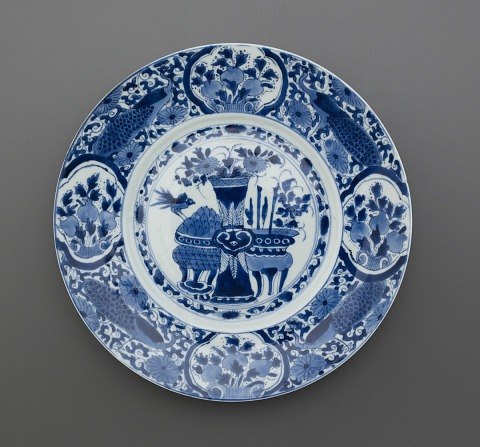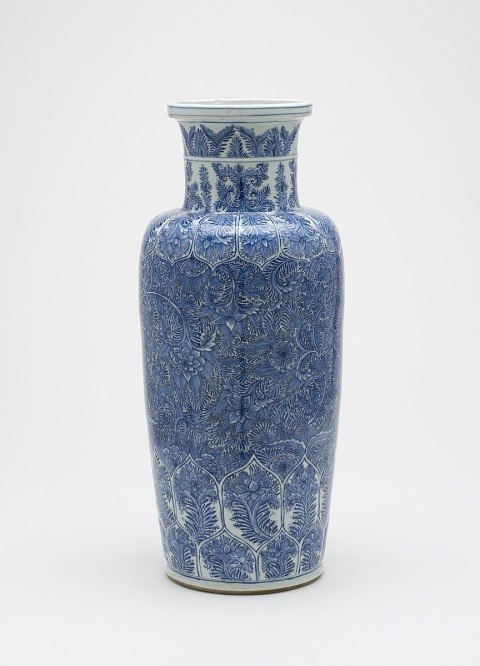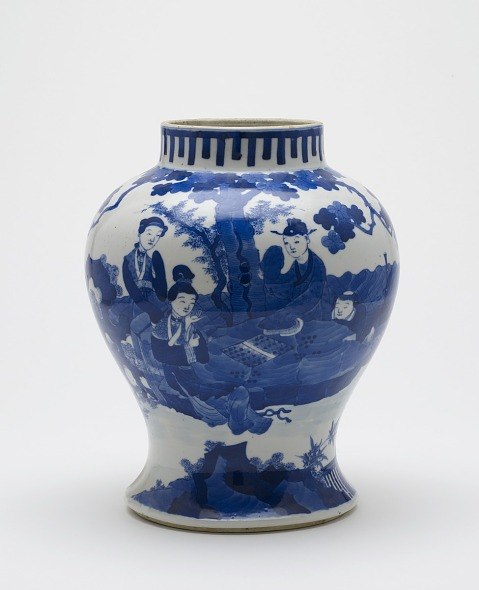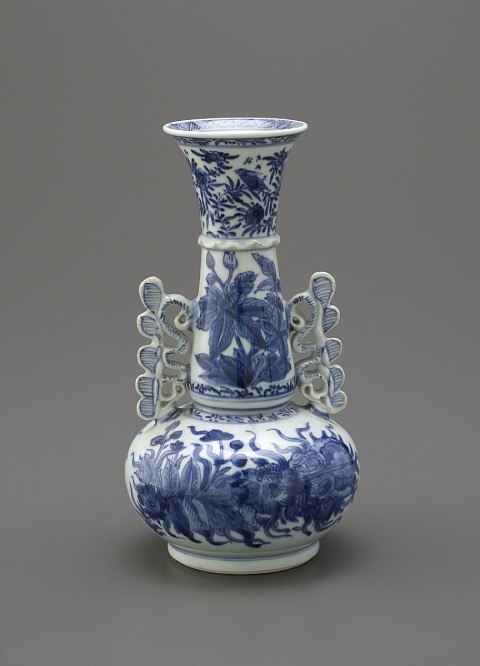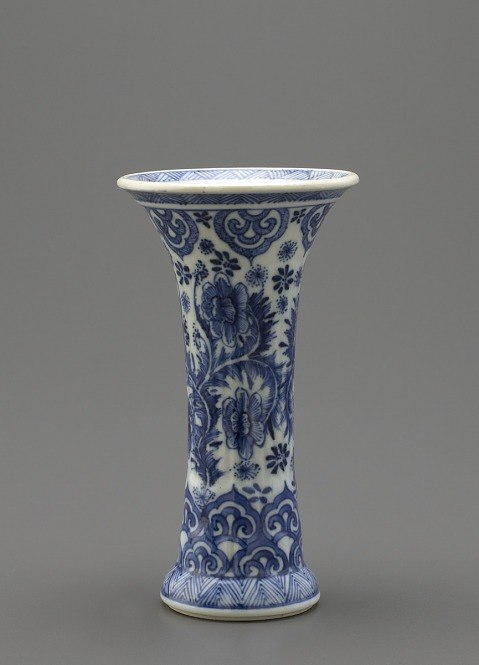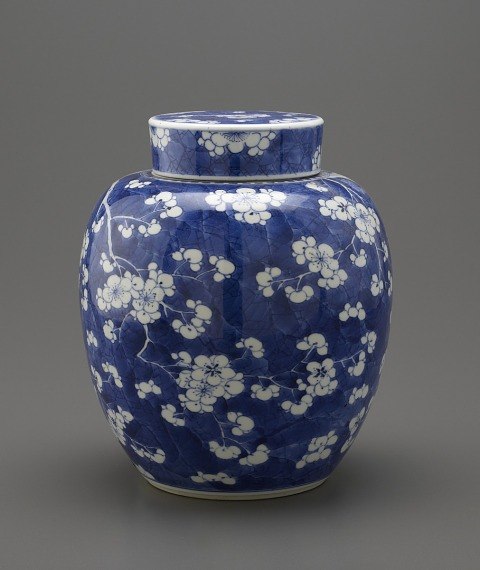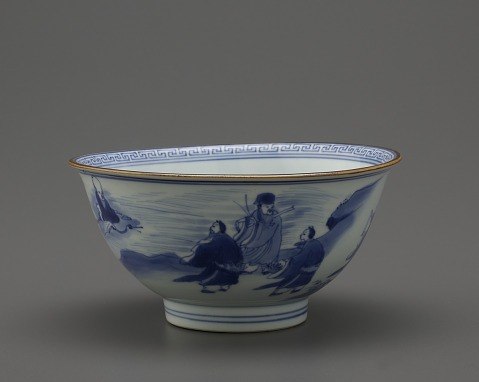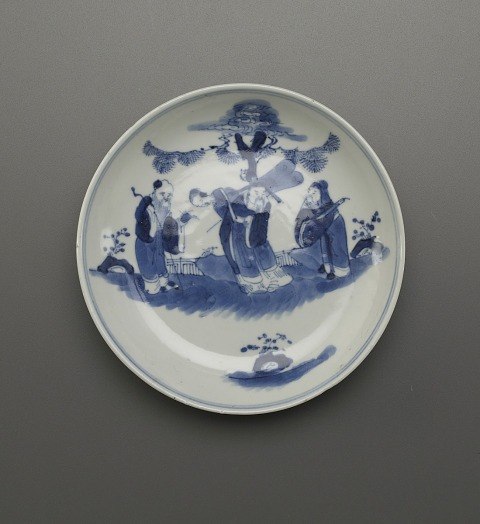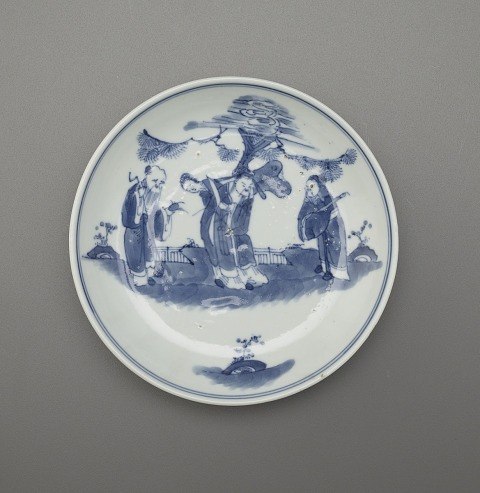May 18, 2019—June 1, 2022
-
Dates
-
Location
Freer Gallery of Art | Gallery 12
-
Collection Area
American Art
Blue-and-white Chinese porcelains once again fill the shelves of the Peacock Room, just as they did in the 1870s, when Frederick Leyland, a shipping magnate in London, dined there.
Blue-and-white porcelain dating to the Kangxi period enliven the east and north walls of the Peacock Room. These pieces from the permanent collection of the Freer Gallery are similar to what Leyland would have displayed. Recently commissioned ceramics line the west and south walls. These new porcelains are part of a 1,500-year-old tradition of making porcelains in Jingdezhen, China. Porcelain production during the Kangxi period (1662–1722) expanded China’s export trade with Europe, sparked the Chinamania craze in the nineteenth century, and bolstered the East-West exchange that endures to this day.
When artist James McNeill Whistler was asked to consult on colors in Leyland’s dining room, the sinuous patterns and brilliant colors of the Kangxi ware on display served as immediate inspiration. Whistler painted over the room in a flurry of blue and gold. His intricate patterns resemble the plumage of peacocks and create a tonal counterpoint to the porcelains. The Peacock Room in Blue and White allows us to experience the room in much the same way Whistler originally envisioned it.
Peacock Room Revealed
To prepare for this installation of blue-and-white porcelains, the shelves of the Peacock Room were cleared, providing an unobstructed view of the colors and peacock patterns that Whistler used to transform this dining room into “a harmony in blue and gold.”
In 1876 and 1877, Whistler enhanced Frederick Leyland’s dining room with golden peacocks. He painted every inch of the ceiling and walls to create an elegant setting in which Leyland could display his collection of Kangxi porcelain as well as Whistler’s 1864 painting The Princess from the Land of Porcelain over the mantelpiece. Charles Lang Freer purchased the room in 1904 and installed it in his home in Detroit, Michigan. After Freer’s death in 1919, the Peacock Room was moved to Washington, DC, and put on permanent display in the Freer Gallery of Art.

Peacock Room Revealed: View toward north wall
Image 1 of 3
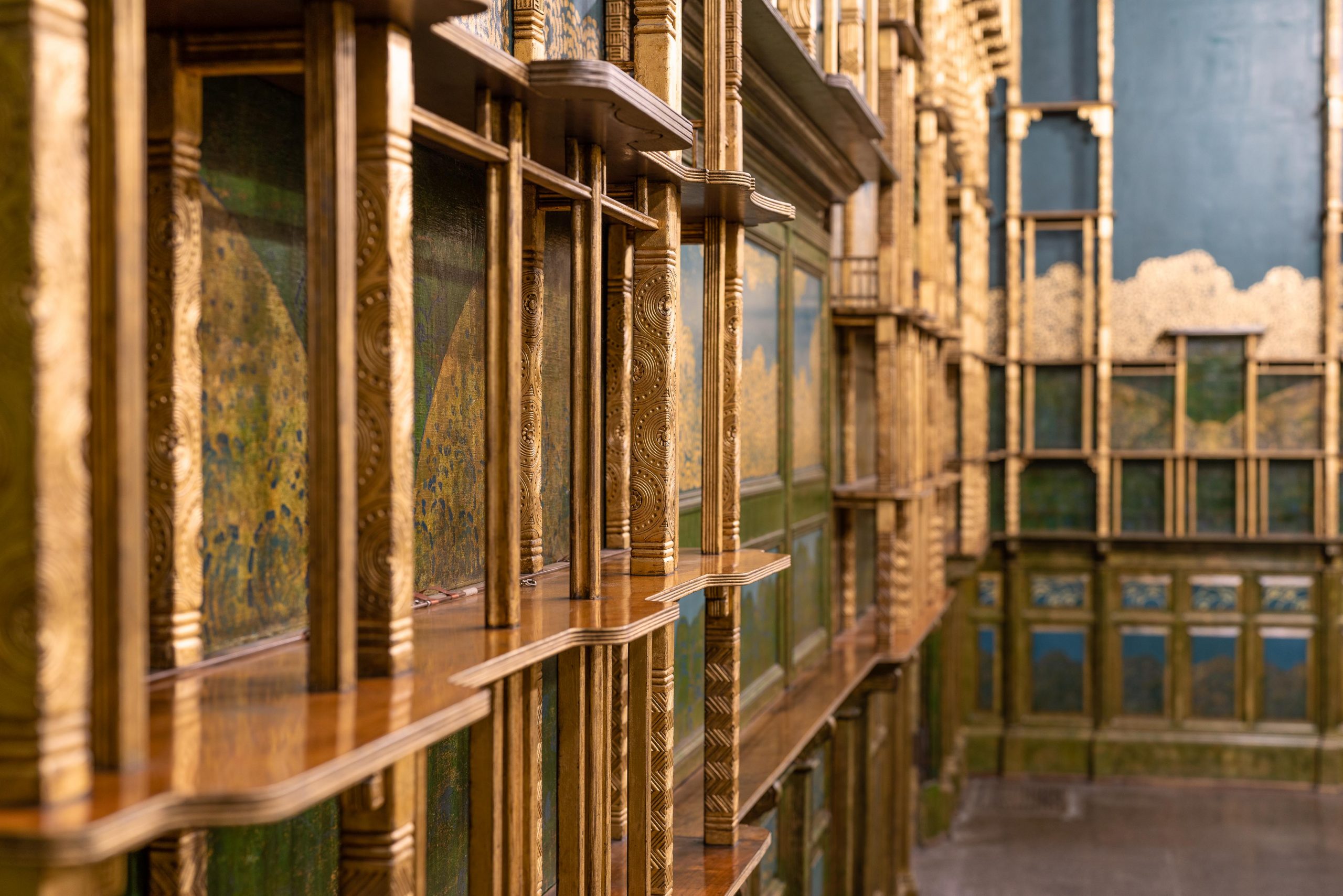
Peacock Room Revealed: Shelving detail
Image 2 of 3
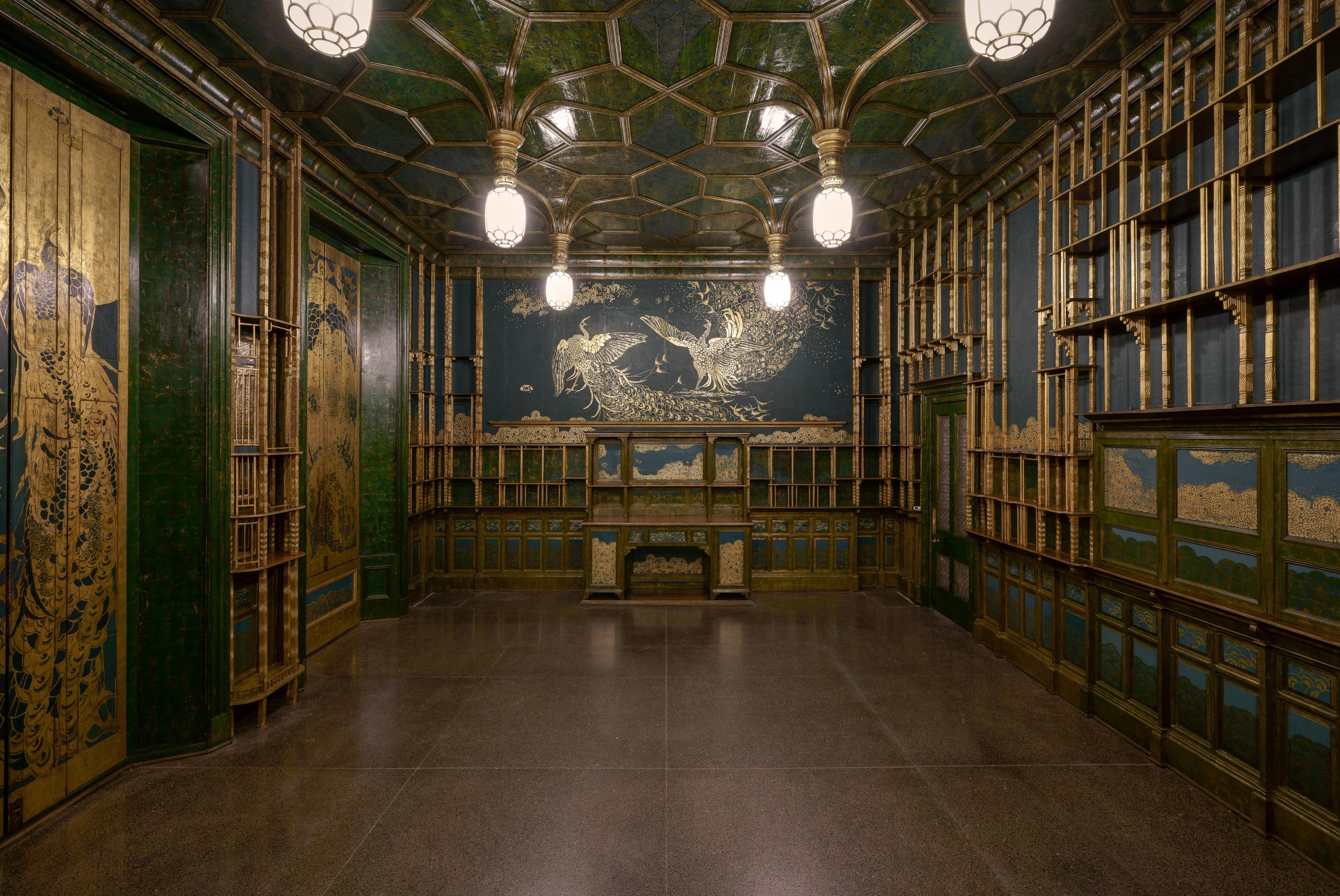
Peacock Room Revealed: View toward south wal
Image 3 of 3
Installing Porcelains
Nearly 170 pieces of new and historic blue-and-white Chinese porcelain were installed on the shelves framed by the room’s gilded walnut latticework. The careful, laborious process took several days to complete. Ninety-five of the vases, bottles, jars, and plates were recently commissioned to fill the niches of the south and west walls. Drawing upon Kangxi-style designs, the new ceramics reflect the 1,500-year-old tradition of making and decorating porcelains in Jingdezhen, China.
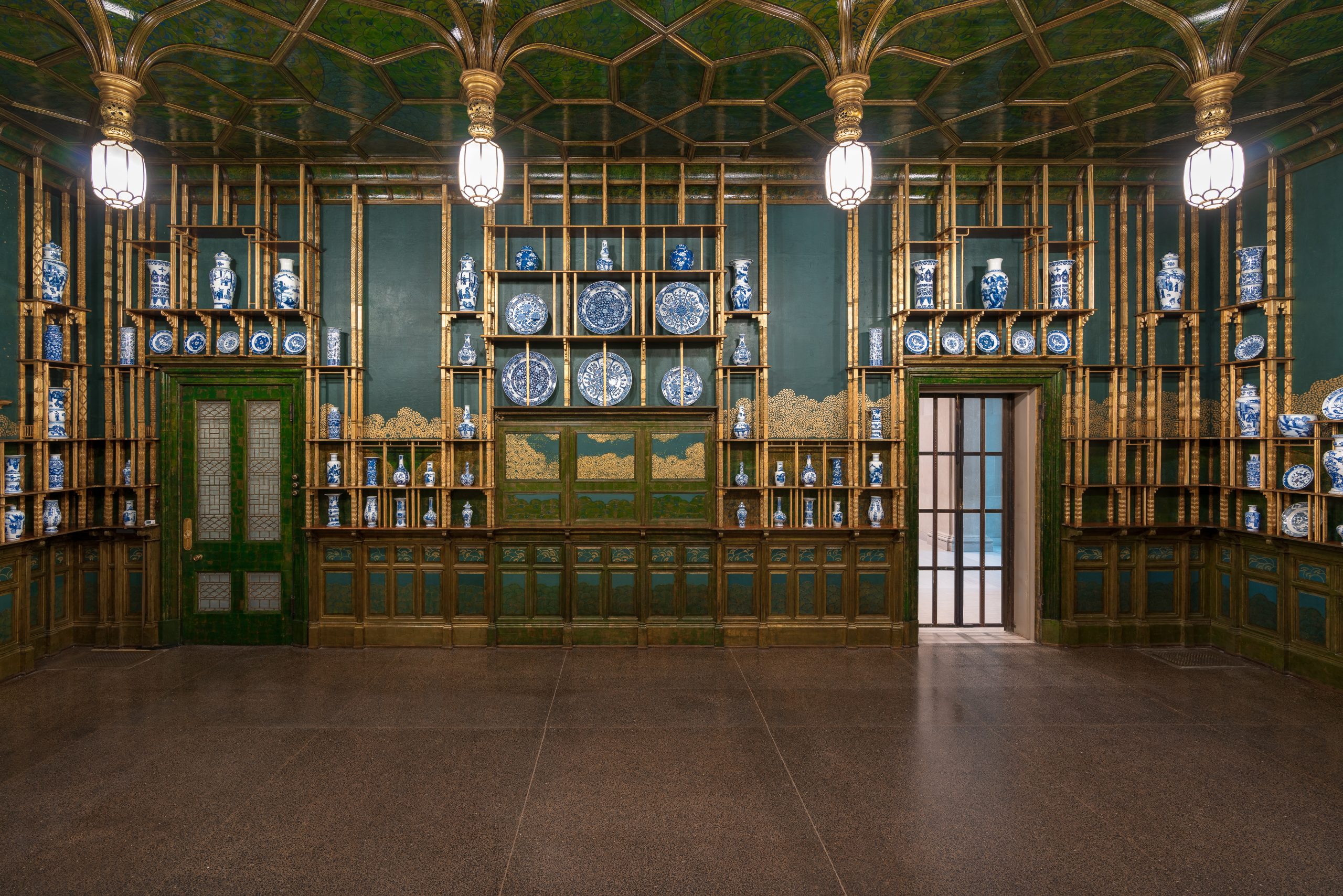
Peacock Room: West wall with 21st century porcelains in a Kangxi-style
Image 1 of 3

Peacock Room: Detail of north wall with Kangxi-period and earlier porcelains
Image 2 of 3

Peacock Room: South-west corner with 21st century porcelains in a Kangxi-style
Image 3 of 3
The Story of the Beautiful
To learn more about the Peacock Room’s dynamic history, visit the Story of the Beautiful, a major online resource created by the Freer Gallery of Art and Wayne State University in Detroit, Michigan. Digital recreations present the Peacock Room in Victorian London of the 1870s and in the United States in the early twentieth century. Learn more about the diverse Asian ceramics that Charles Lang Freer displayed on its shelves. Browse the collections and use the interactive timeline and map to discover chronological and geographical connections of cultural interchange.
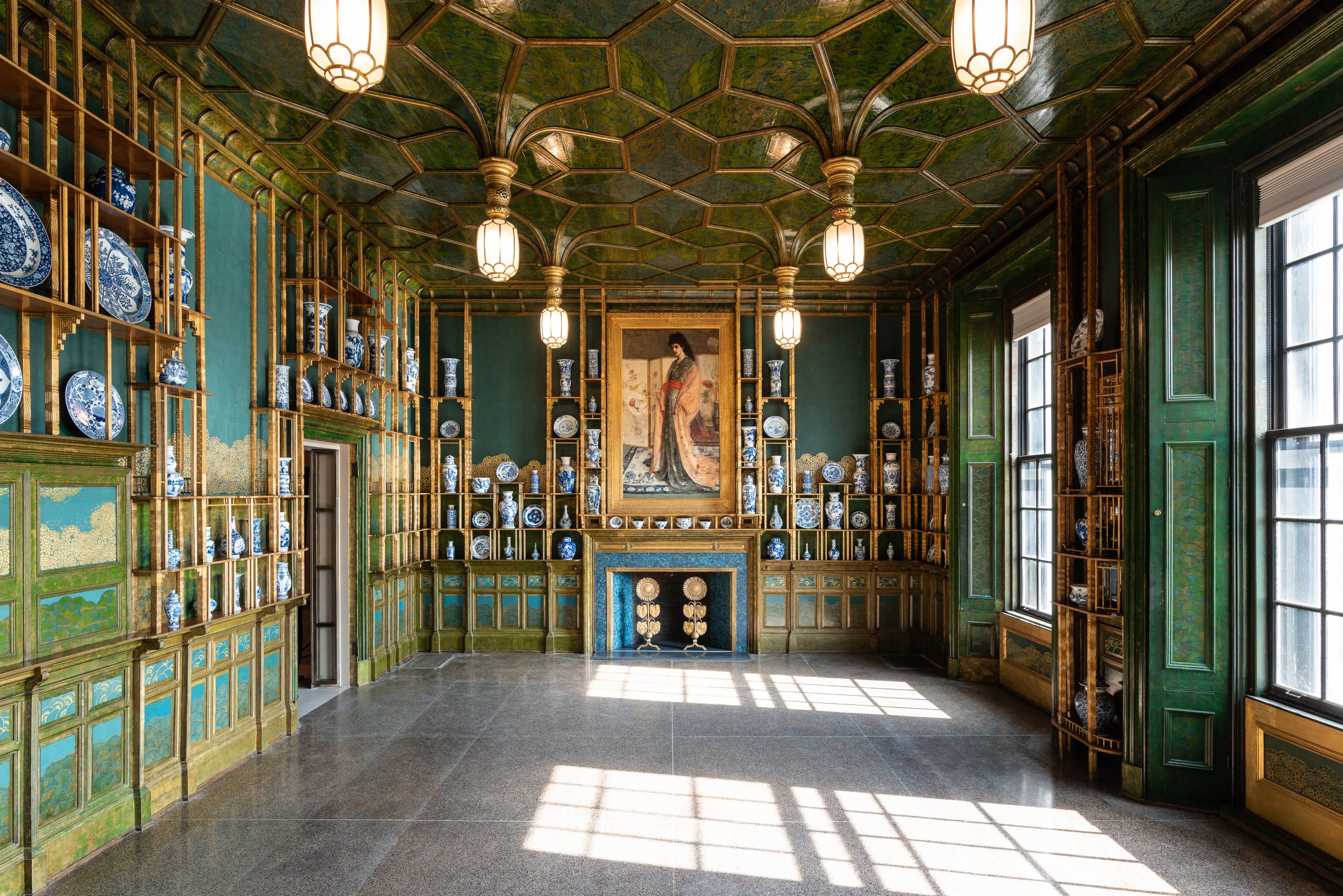
Peacock Room: View toward north wall with open shutters
Image 1 of 3
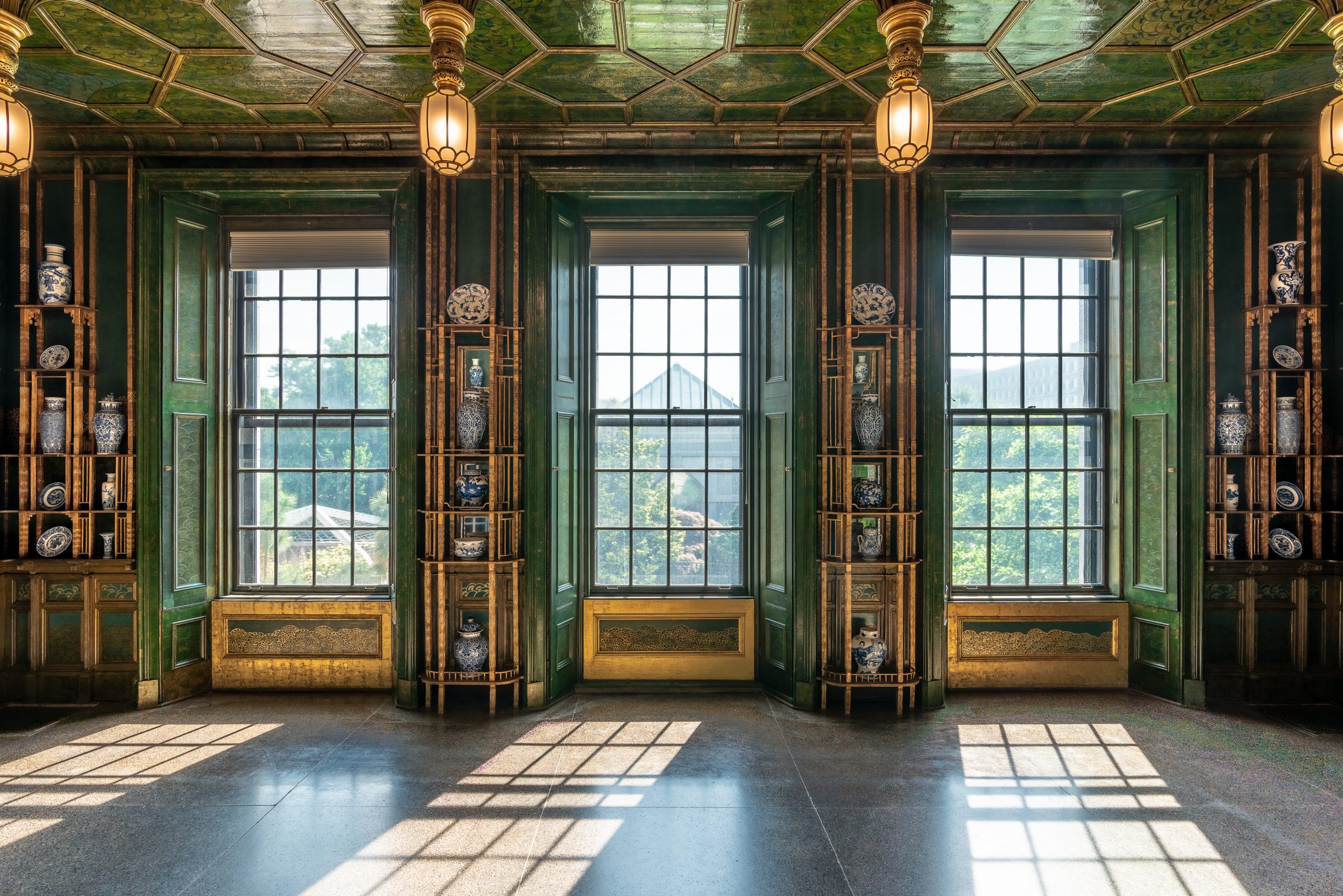
Peacock Room: East wall with open shutters and Kangxi-period and earlier porcelains
Image 2 of 3
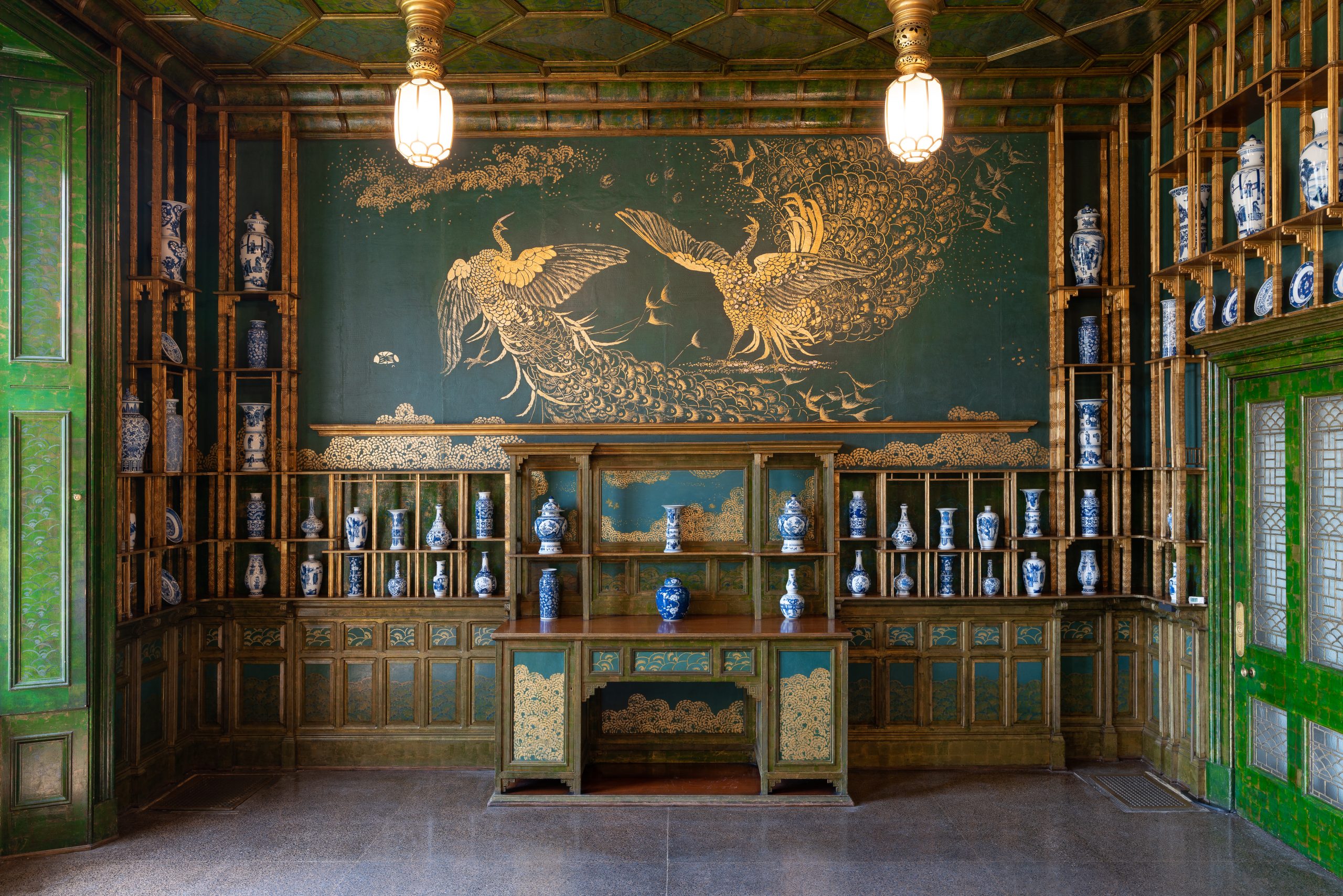
Peacock Room, south wall with 21st century porcelains in a Kangxi-style
Image 3 of 3
The Peacock Room in Blue and White Object Gallery
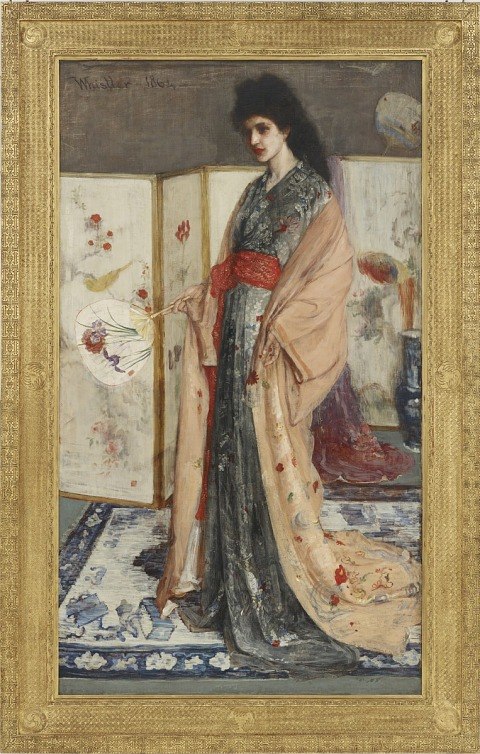
La Princesse du pays de la porcelaine (The Princess from the Land of Porcelain) Oil painting; F1903.91a-b
Image 65 of 81
Conversations about Ceramics: Chinese Cobalt-decorated Porcelain in Foreign Markets
Conversations about Ceramics in the Freer Gallery of Art: In conjunction with the exhibition The Peacock Room in Blue-and-White, Jan Stuart, Stacey Pierson and Louise Cort discuss Chinese Cobalt-decorated Porcelain in Foreign Markets.
(Part 1) Exported to Europe, Japan, and Southeast Asia – The Peacock Platter – Export/Exported Porcelain – Identifying Blue-and-White- Kendi
| View on YouTube(Part 2) Porcelain for A Foreign King and A Chinese Emperor – Thai Export Ware – Early Ming Imperial Ware
| View on YouTubeThe Peacock Room in Blue and White
- Jump To...

